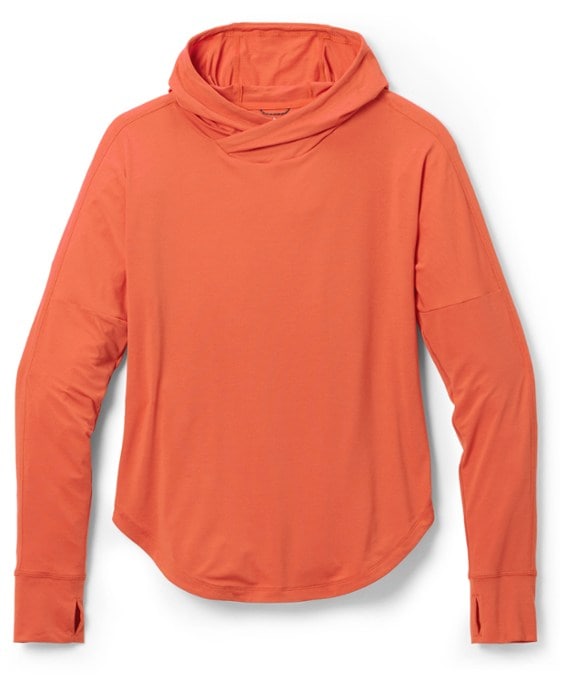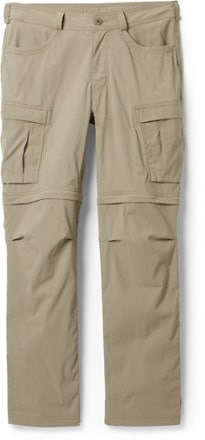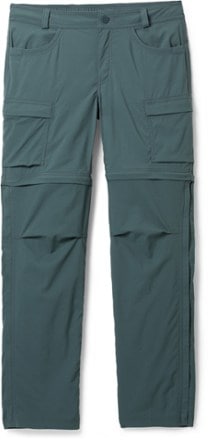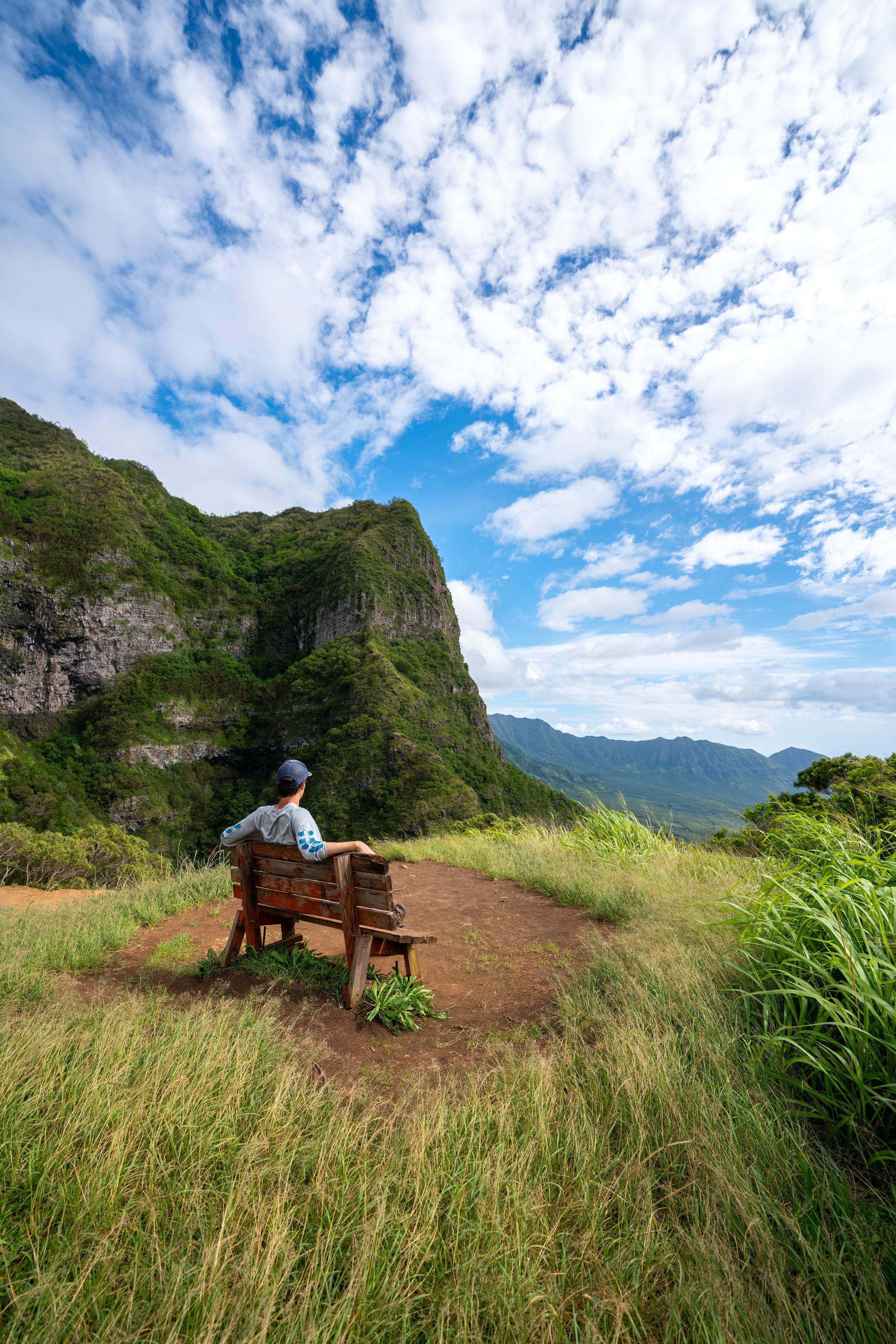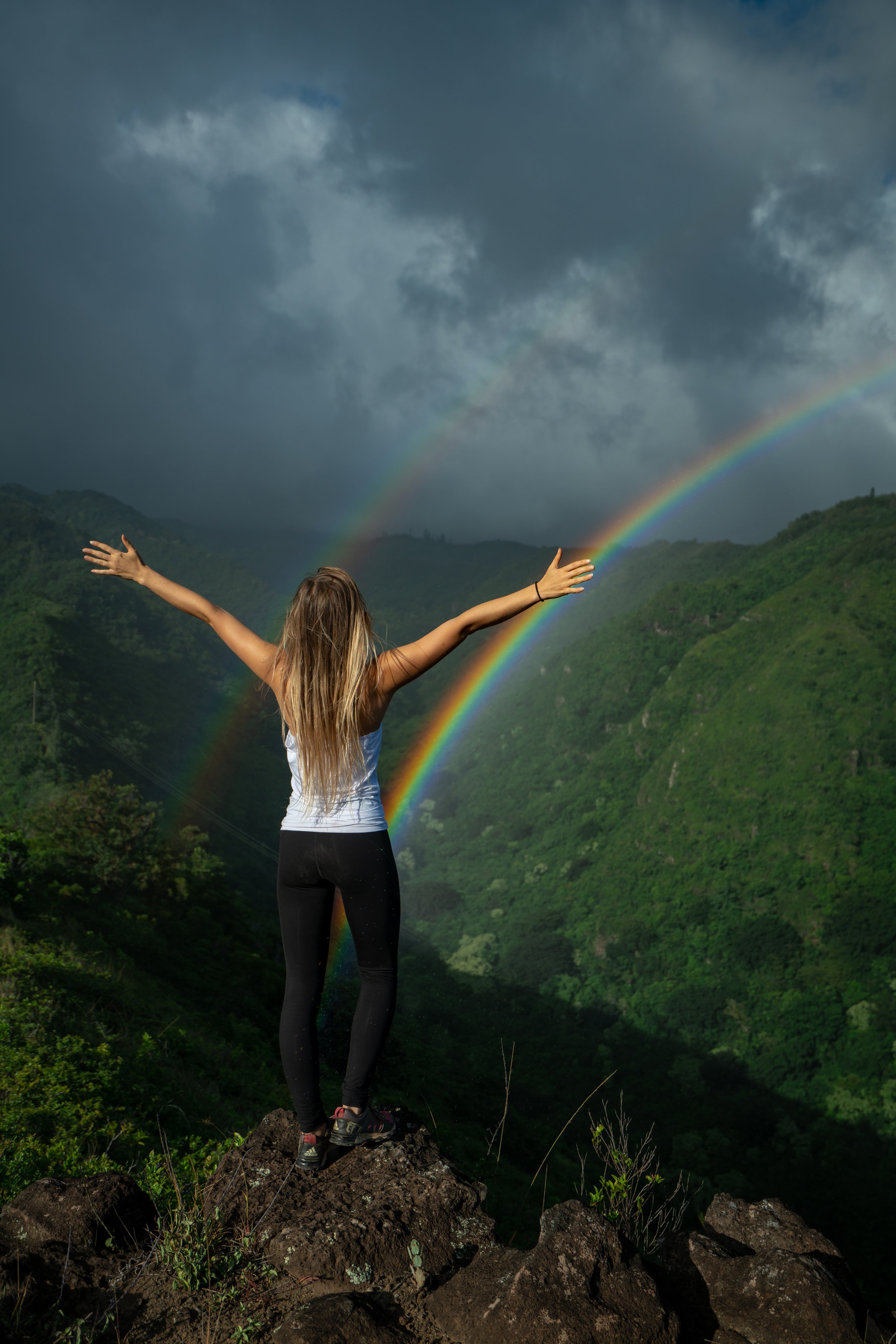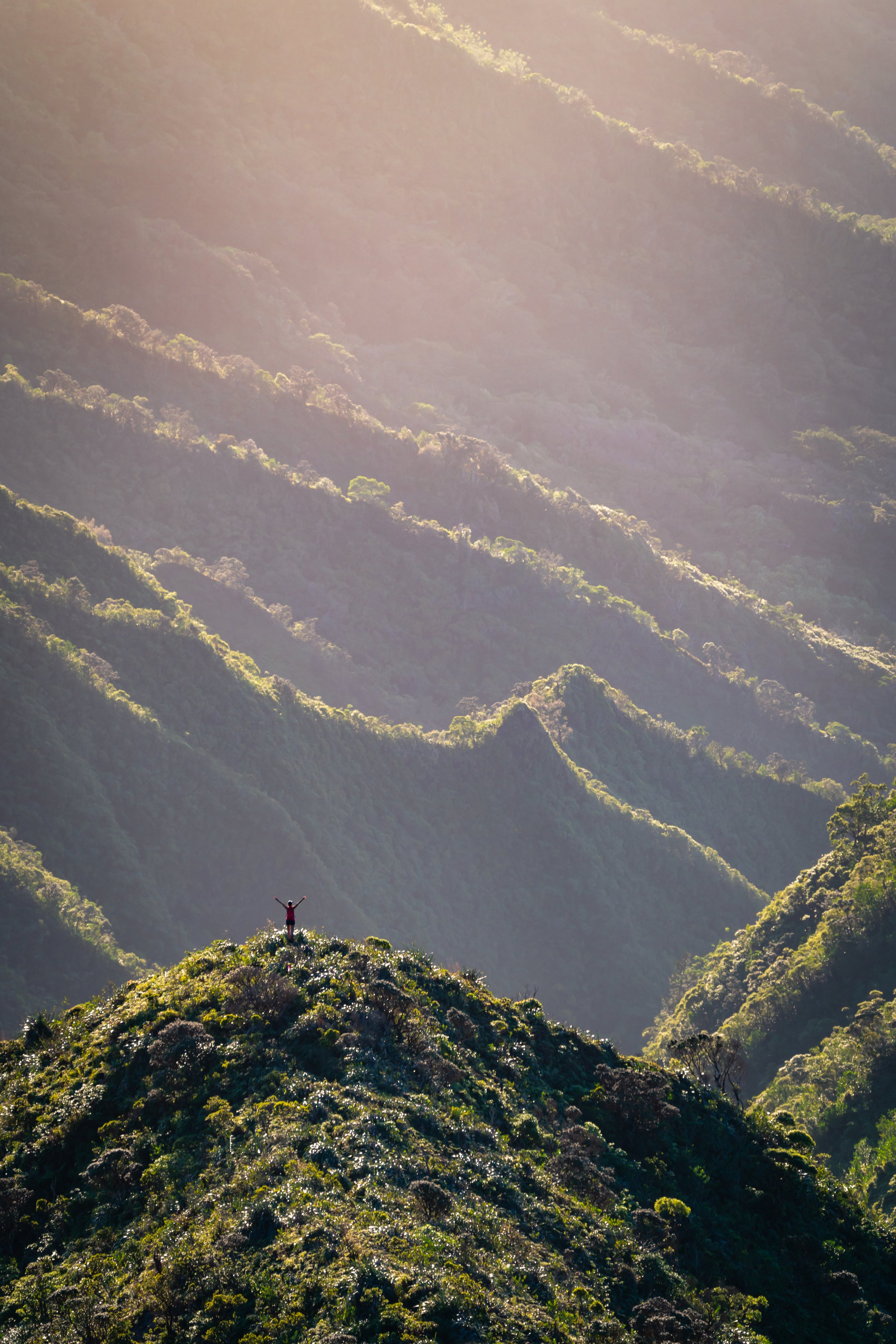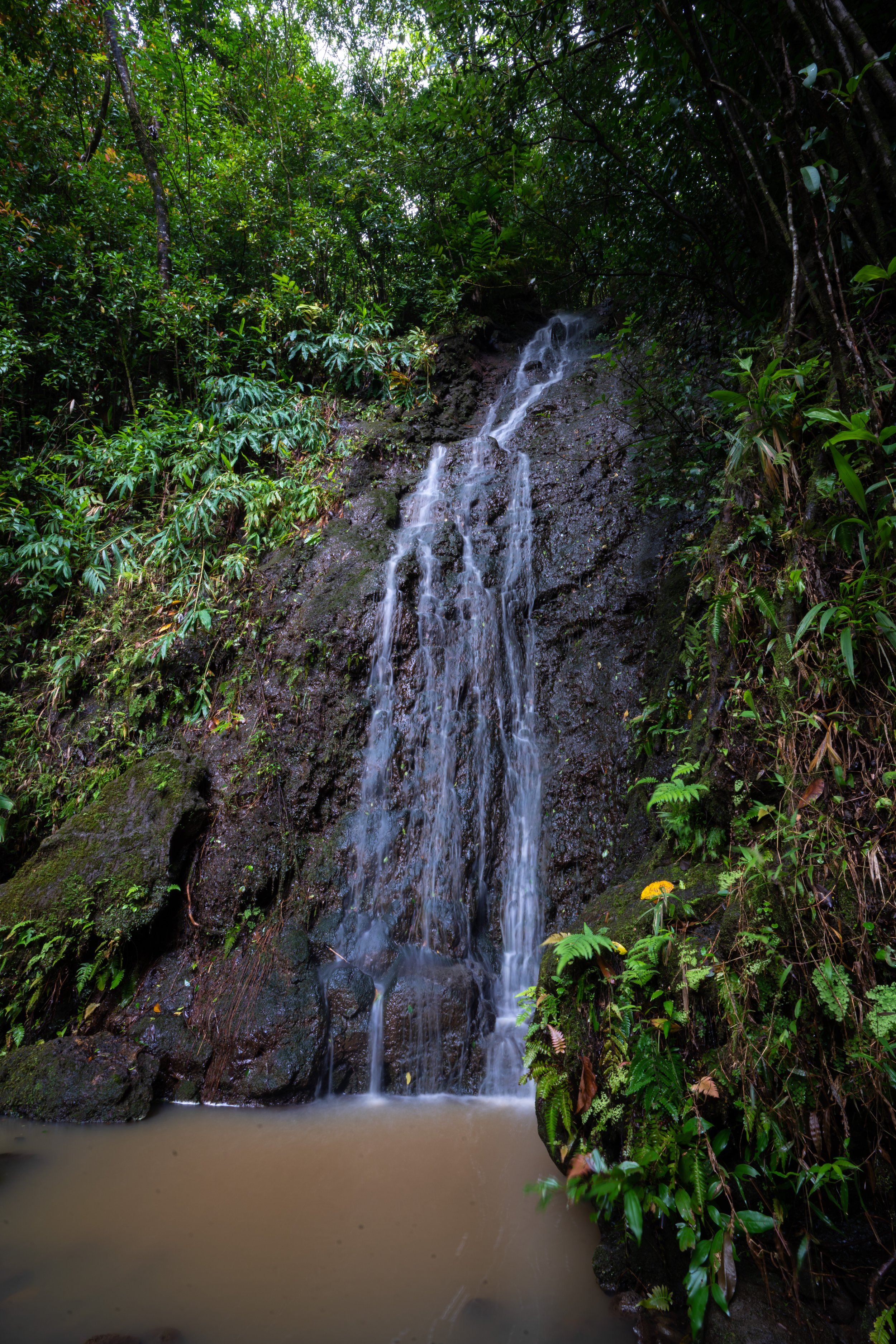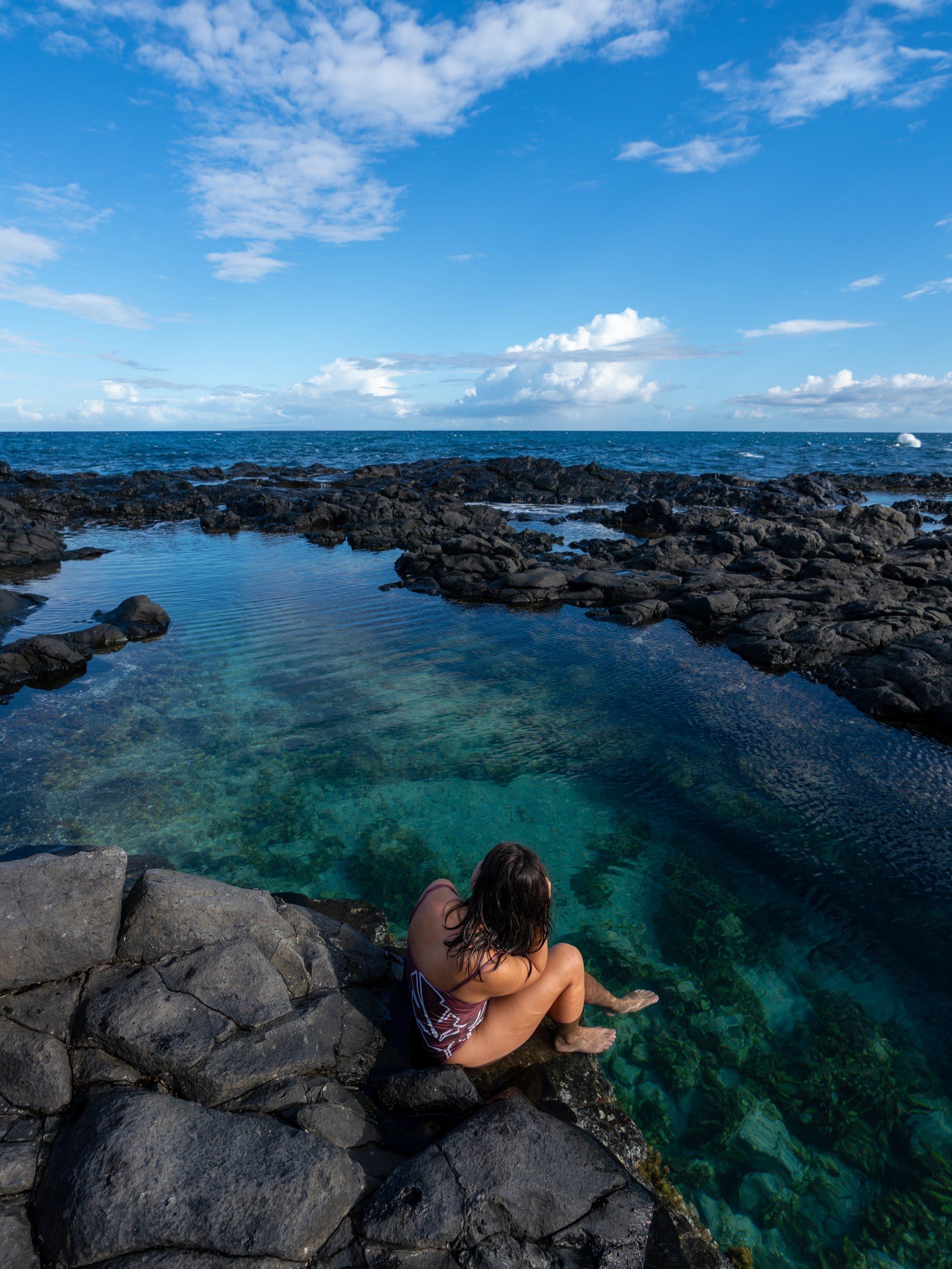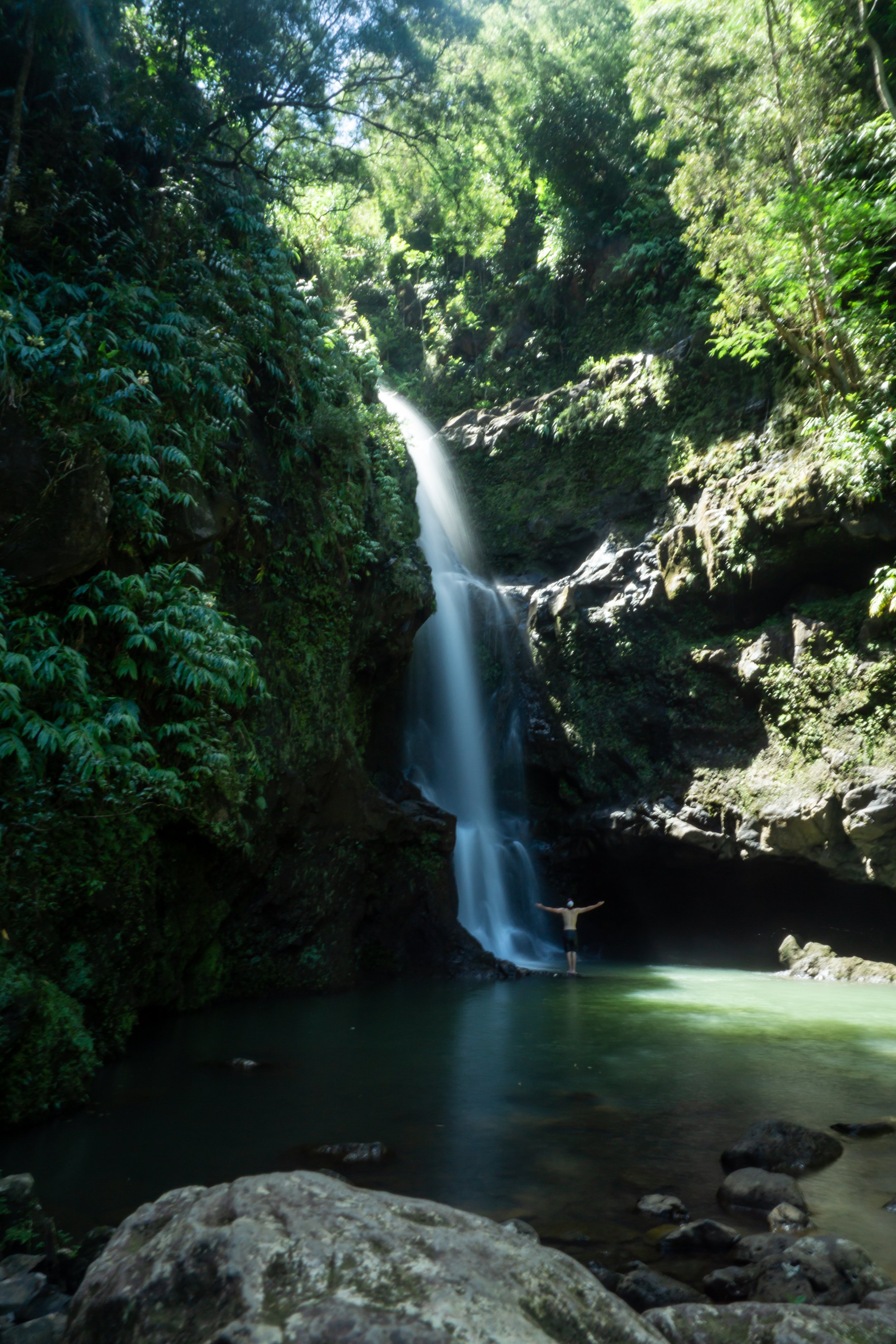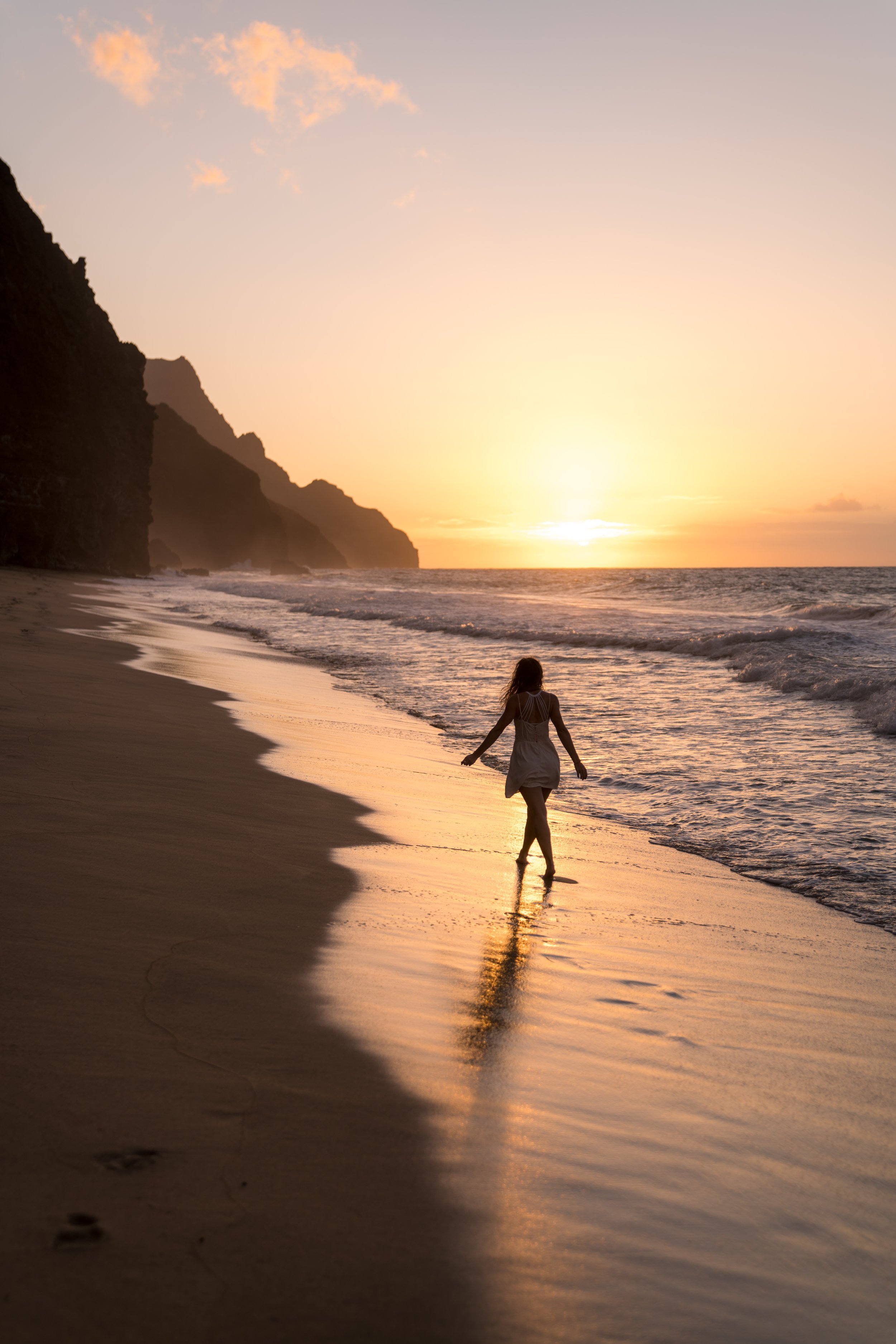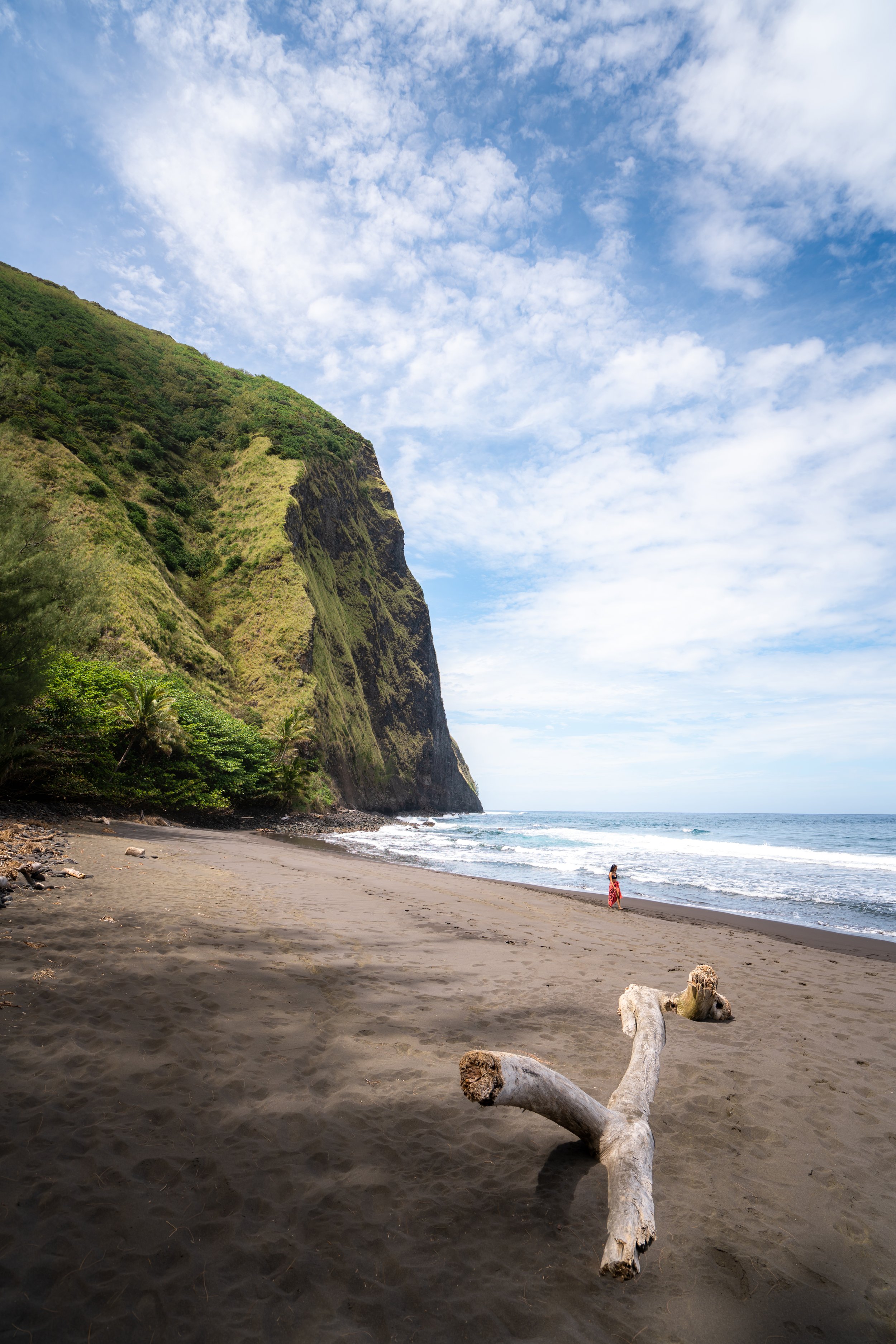Hiking the Puʻu ʻO Kona Trail via Kuliʻouʻou Valley on Oʻahu, Hawaiʻi
Distance: 3.6 miles / 5.8 km
The Puʻu ʻO Kona Trail, also called the Puʻu ʻO Kona Ridge Trail, is a beautiful alternative day hike in the back of Kuliʻouʻou Valley that is often thought of in connection with the Kuliʻouʻou Ridge Trail, as the two can be combined to create one longer loop that both begins and ends at the same trailhead.
This is where the name Kuliʻouʻou Loop Trail comes from, which involves either ascending Kuliʻouʻou Ridge or the Puʻu ʻO Kona Trail, followed by a short connection along the Koʻolau Summit Trail (KST).
This is to say that the Puʻu ʻO Kona-Kuliʻouʻou section of the KST is one of the most trafficked portions of the summit trail because it allows for a relatively quick adventure across the top without becoming more involved, as most summit adventures often do.
In any case, the Puʻu ʻO Kona Trail ascends the much quieter and slightly more challenging side of Kuliʻouʻou Valley, making it a perfect adventure for anyone interested in a more adventurous and, in my opinion, more beautiful day hike compared to Kuliʻouʻou Ridge.
Kuliʻouʻou Valley Trailhead Parking
Parking for both the Puʻu ʻO Kona Trail and the Kuliʻouʻou Ridge Trail are located at the same trailhead in the back of Kuliʻouʻou Valley on Kālaʻau Place.
That said, parking on Kālaʻau Place has very limited space for both residents’ cars, as well as hikers all fighting for the same spots. Therefore, parking is one of the biggest reasons that I recommend starting early—especially on weekends!
Google Maps Directions: Puʻu ʻO Kona Trailhead
My Hawaiʻi Hiking Checklist
Osprey 3L Water Bladder - The Osprey 3L water bladder is the most universal hiking and backpacking water bladder on the market, and it’s my go-to because of the slide-off seal that allows it to be quickly filled from the top. Additionally, individual parts are easily replaceable, such as the bite valve.
Blister / Heel Protectors - I swear by these cheap, amazing heel protectors to prevent blisters for nearly every kind of hiking and backpacking that I do!
Black Diamond Headlamp - Personally, I recommend the Black Diamond Storm because it is one of the brightest, lightest, and longest-lasting headlamps on the market—and trust me, the weight-to-battery-life ratio really does matter!
Hiking / Trail Running Shoes - Depending on the type of trail, I prefer to use either the Keen Targhee for longer, more rugged hiking or the HOKA Zinal Trail-Running Shoe for lighter, less intense trails. In either case, both have been amazing to me for many years across countless environments, and both can be found in men’s and women’s sizes. - (Men’s Keen / Women’s Keen) (Men’s HOKA / Women’s HOKA)
Waterproof Rain Shell - You never know when it may rain, and I’ve learned over the years that a rain shell is far better than a rain jacket. By this, I mean that it’s best to have something that the water will roll right off of, which is why I recommend the Patagonia Torrentshell 3L available in both men’s and women’s sizes.
High SPF Sunscreen - Packing high-SPF sunscreen is a must for long days outside!
Hiking the Puʻu ʻO Kona Ridge Trail
The Puʻu ʻO Kona Ridge Trail begins at the very end of Kālaʻau Place, which follows the same trail as Kuliʻouʻou Ridge for the first 0.1 miles (0.2 km).
Kuliʻouʻou-Puʻu ʻO Kona Junction
When the Kuliʻouʻou Ridge/ Valley Trail split off the service road to the right, go straight (left) to continue further, where the Puʻu ʻO Kona Trailhead will be found shortly after the stream up ahead.
Read My Separate Posts: Kuliʻouʻou Ridge Trail / Kuliʻouʻou Valley Trail
Puʻu ʻO Kona Ridge Trailhead
On the far side of the Kuliʻouʻou Stream, the Puʻu ʻO Kona Trail will begin in the left corner of the pavement, closest to the fence.
Following the trailhead, the Puʻu ʻO Kona Trail begins ascending the side of Puʻu ʻO Kona Ridge, which steeply gains about 550 ft. (168 m) in just 0.25 miles (0.4 km) to the ridge crest.
Unlike Kuliʻouʻou Ridge across the valley, the Puʻu ʻO Kona Trail essentially climbs straight up, whereas the latter ascends much more gradual switchbacks to the top of the ridge.
That being said, some hikers may prefer to carry trekking poles for this steep, slippery section of the trail, which can be muddy in spots after it has recently rained.
Toward the upper elevations of this steep ascent, the Puʻu ʻO Kona Trail traverses a few natural switchbacks along the hillside.
Finally, when the trail enters this Ironwood forest, the top of the ridge and the end of the steep section is just ahead.
Puʻu ʻO Kona Ridge
This is the top of the steep ascent out of Kuliʻouʻou Valley.
Here, go right to continue toward the Koʻolau Summit, but remember to take note of this left turn off the ridge, should you choose to treat Puʻu ʻO Kona as an out-and-back hike.
From experience, I know that this turn may not be marked well, meaning it can be very easy to miss if you aren’t paying attention.
Once on the ridge, the Puʻu ʻO Kona Trail passes through a mixed Strawberry Guava-False Koa-Ironwood forest before the hike transitions into more native habitat further up the mountain.
ʻŪlei is one of the first native plants that can be seen along the trail, as the beginning sections of the hike are largely dominated by non-native, invasive species.
These initial sections continue to climb, but they are nowhere near as steep as the hillside at the start or the final rope sections prior to the summit.
As the trail climbs higher, the overhead canopy becomes thinner and thinner until it is essentially nonexistent at the uppermost elevations.
For this reason, I highly recommend hiking in a hooded sun shirt, as shirts like this have become my go-to form of sun protection—not only for hikes in Hawaiʻi but around the world.
Seeing ʻŌhiʻa lehua growing alongside the trail is always a nice sign that you’re climbing higher in Hawaiʻi!
This peak on the ridge in the distance is not the summit of the Puʻu ʻO Kona Ridge Trail.
Rather, the true summit cannot be seen until the very end of the hike because a handful of steep climbing sections prior to the top.
This part of the Puʻu ʻO Kona Trail parallels the Cook Pine-Ironwood forest section of the Kuliʻouʻou Ridge Trail across Kuliʻouʻou Valley.
When the Puʻu ʻO Kona Trail dips down to this low-lying section prior to the Uluhe-covered hillside that can be seen ahead, the trail begins to make a quick transition from a predominantly non-native, dry-forested landscape to a wetter native forest that continues to the summit.
This transition is one of the most abrupt of any Oʻahu ridge hike, especially as invasive species encroaching on our forests is an ever-increasing problem in Hawaiʻi.
This Lama forest across this low-lying area on the Puʻu ʻO Kona Trail is one of the better places on Oʻahu to see Hawaiʻi’s endemic Lama trees.
However, don’t confuse them with the invasive Strawberry Guava, which grows side by side through this section.
This is where the Puʻu ʻO Kona Trail begins climbing out of the low-lying Lama forest on the ridge, marking beginning of the quick transition to the wetter forest ahead.
This is where the Uluhe-ʻŌhiʻa-dominated landscape begins, which continues from here to the Koʻolau Summit.
This view looking back toward Kuliʻouʻou Valley and Koko Head in the distance is one of my favorites on the entire Puʻu ʻO Kona Trail!
At roughly 1.5 miles (2.4 km), the final sections that must be climbed to reach the summit become visible for the first time.
These short sections on the upper ridge of Puʻu ʻO Kona are notoriously crumbly and loose!
That said, consider bringing your own ropes to replace any that might be weathered, as the Puʻu ʻO Kona hike is not managed or maintained by any agency.
This rope section is one of two long, steep climbs on the Puʻu ʻO Kona Trail.
It’s as if Puʻu ʻO Kona is constantly falling apart—a process inherently accelerated by hikers who decide to hike the full Kuliʻouʻou Loop.
With about 0.2 miles (0.3 km) left on the Puʻu ʻO Kona Trail, the summit becomes visible for the first time on the entire hike.
It’s always great to see Māmaki growing in Oʻahu’s forests, but if you’re curious to try Māmaki tea, I ask that you please don’t harvest from Hawaiʻi’s native landscapes.
Instead, Māmaki can be purchased, as it is grown commonly for commercial purposes.
This is the second significant steep climb on the Puʻu ʻO Kona Trail, which, again, can be climbed or descended much more easily if you bring your own ropes.
While this overgrown stretch between the final rope section and the summit is short, some hikers may prefer to wear hiking pants, which can be especially helpful if you plan to hike further along the Koʻolau Summit to Kuliʻouʻou Ridge.
This flat spot just before the summit has to be one of the most beautiful places to camp along the Koʻolau Summit Trail!
Puʻu ʻO Kona (False ʻO Kona)
After 1.8 miles (2.9 km), the Puʻu ʻO Kona Trail reaches the Koʻolau Summit.
That being said, what many people, including myself, call Puʻu ʻO Kona is actually not the true summit of Puʻu ʻO Kona. Rather, the true named summit is the smaller, less significant peak just to the south, about halfway in between this peak and the Kuliʻouʻou Summit.
Regardless, this much more prominent summit, standing at roughly 2,350 ft. (716 m), is often referred to as Puʻu Oʻ Kona, especially when talking about the loop trail with Kuliʻouʻou Ridge.
If you are interested in making this crossover, the trail continues south along the KST across the back of Kuliʻouʻou Valley, which you can learn more about in my separate article about the full Koʻolau Summit Trail linked below.
Read My Separate Post: Koʻolau Summit Trail (KST)
Native Plants on the Puʻu ʻO Kona Trail
The lower elevations of Kuliʻouʻou Valley are predominately non-native, invasive species, but as the trail gains the ridge and ascends into the mesic-forested environment, native plants become much more abundant from here to the summit. It’s actually quite amazing how much more pristine the Puʻu ʻO Kona Trail is compared to Kuliʻouʻou Ridge, just across the valley.
That said, a few of the native plants on the Puʻu ʻO Kona Trail include ʻUhaloa, Lama, ʻŪlei, ʻŌhiʻa lehua, Kanawao, Kōpiko, Māmaki, Manono, ʻAlaʻala wai nui, and a species of the Kokolau (Bidens asymmetrica) that’s endemic to the southeastern Koʻolaus only (Kuliʻouʻou Valley). Therefore, I ask that you please don’t pick any flowers on the hike!
If you are curious about trying the native Hawaiian Māmaki tea, I kindly ask that you don’t harvest Māmaki from our native forests but, instead, buy from one of the local reputable vendors, such as those listed below.
If you would like to learn more about these and many other native Hawaiian plants from across the islands, I encourage you to check out my separate post linked below.
Read My Separate Post: Native Hawaiian Plant Guide
More Oʻahu Adventures
If you’re interested in reading about some more amazing Oʻahu adventures, check out my separate posts below!
Best Hotels & Restaurants in Waikīkī
If you’re trying to decided where to stay on Oʻahu, check out my top 10 list for the best resorts and restaurants in Waikīkī.
I break down what makes one hotel a better choice over another, so that you can find the best fit for your stay on the island.
Read My Separate Post: Best Waikīkī Hotels & Restaurants
HNL Airport-Hotel Shuttle
Prices on ride-share apps like Uber/ Lyft cannot beat the price of booking your hotel shuttle prior to arrival. I say this because there are additional fees for ride-share airport pick-ups at Honolulu Airport (HNL), which is why I recommend booking your transportation in advance using the options below.
Additionally, the last option below will go as far as the Ko ʻOlina Resorts on the West Side and Turtle Bay on Oʻahu’s North Shore!
Best Way to Book Rental Cars!
I travel quite a bit, and I know firsthand that finding a good rental car deal can be a challenge, but that’s why I recommend comparing all of your options with Discover Cars.
In short, Discover Cars is a well-known, reputable business that allows you to search for the best deal across companies, and they have the best full-refund cancellation policy I’ve ever seen, valid up to 72, or sometimes even 48, hours prior to your reservation!
Book Here: Discover Cars
Visiting Other Islands
If you are visiting Oʻahu or heading to another island, check out some of my personal recommendations for Oʻahu, Maui, Kauaʻi, Molokai, Lānaʻi, and Hawaiʻi Island (Big Island) in these separate posts.
If you’re trying to decide which island is right for your visit, check out my overview about each island in the post below.
Read My Separate Post: What is the Best Hawaiian Island to Visit?
What is the Best Time of Year to Visit Hawaiʻi?
The weather in Hawaiʻi can often appear to be warm and beautiful throughout the year, but in my experience, there is a lot more to consider when planning what time of year to visit the islands, such as what island you are considering, what sides of each island do you plan to stay, what activities are you most interested in, the wildlife, and countless other nuanced variables that can all impact the type of trip you can expect to have.
For these reasons, I highly recommend reading through my separate article to not only understand my thoughts regarding the best time of year to come to Hawaiʻi but also what you need to consider based on the time of year that you plan to visit.
Read My Separate Post: What is the Best Time of Year to Visit Hawaiʻi?
10 Best Tours & Excursions on Oʻahu
There are a lot of different tour options to choose from on Oʻahu, but to make it easier to decide, I made a list of my favorite tours because some things simply are better with a local guide!
Read My Separate Post: Best Tours on Oʻahu
Safety
All hikes in Hawaiʻi should not be compared to trails outside of the islands, and hikers should exercise due caution on every adventure, given that many are extremely dangerous.
By this, I mean that Hawaiʻi is known for hot, humid weather, steep, dramatic, and unstable cliffs, and flash floods, which can occur without warning. Therefore, it is important that you check the local forecast, understand the physical condition of your entire group, and pack sufficient food and water before attempting any adventure.
Disclaimer
All information provided on this blog is for informational purposes only and is not intended to be a substitute for information or advice from qualified professionals or managing agencies.
Noah Lang Photography LLC makes no representations or warranties regarding the accuracy or completeness of the information provided here, and readers should use their own discretion, judgement, and seek professional advice where it is appropriate.
Furthermore, Noah Lang Photography LLC shall not be held responsible for any injuries, lost individuals, or legal issues arising from the use of information provided on this website, and if applicable, the above safety disclaimer should be referenced to provide a generic overview of the risks involved.
All said, the content on this blog is for the sole use of Noah Lang Photography LLC, and unauthorized use or reproduction of this content is strictly prohibited.
Disclosure
This post is not sponsored.
However, some of the links in this post are affiliate links, which means that I may earn a small commission if a purchase is made through one of those links. This commission comes at no additional cost to you, and I only recommend products that I personally use and believe will add value to my readers. Thank you for your support, which enables me to continue creating more!
To read the full privacy policy, click here.

About This Blog
Noah Lang Photography, also known as @noahawaii, is 100% reader-supported!
I do not accept guest articles or sponsored content of any kind on my blog, which is why, if you enjoy the outdoor and travel content I create, please consider buying me a coffee!
I appreciate your support, which helps me continue to keep this blog alive!













